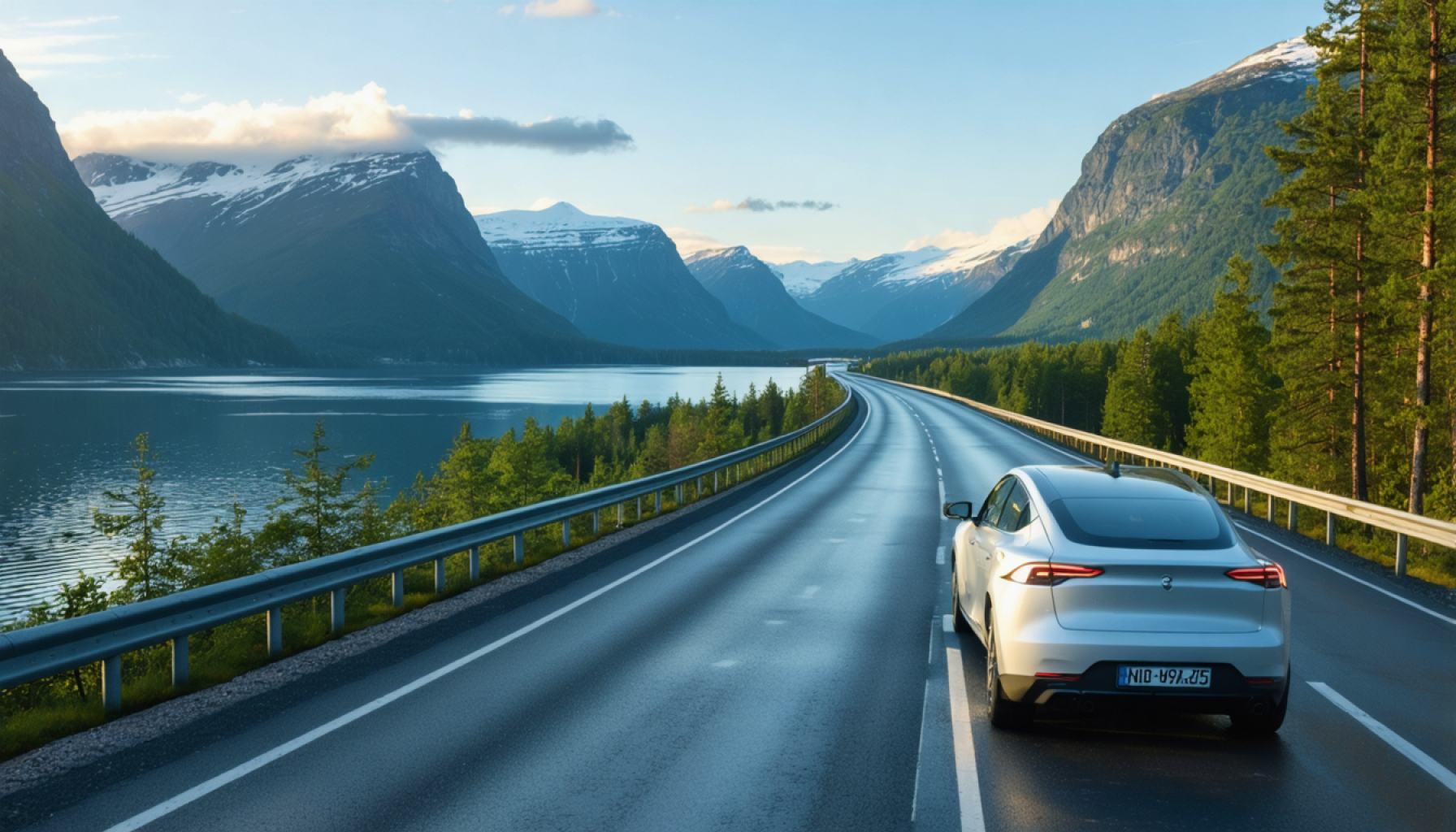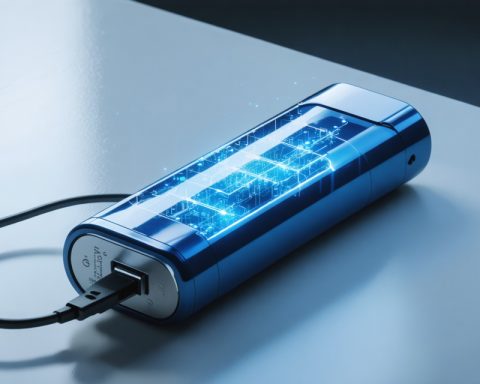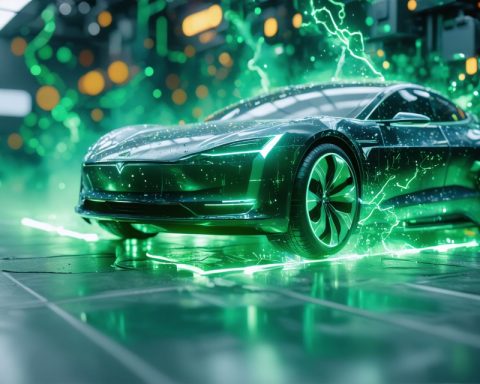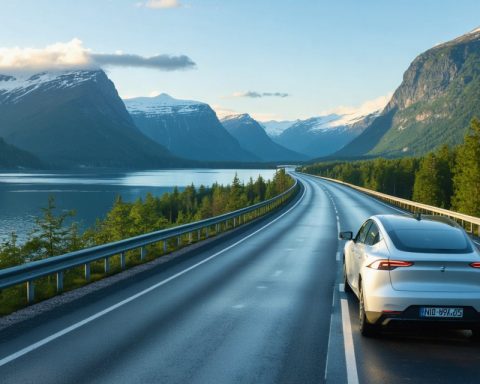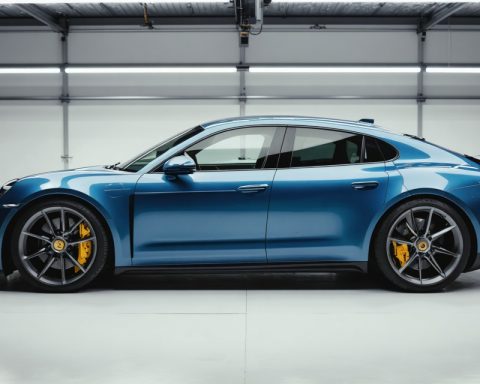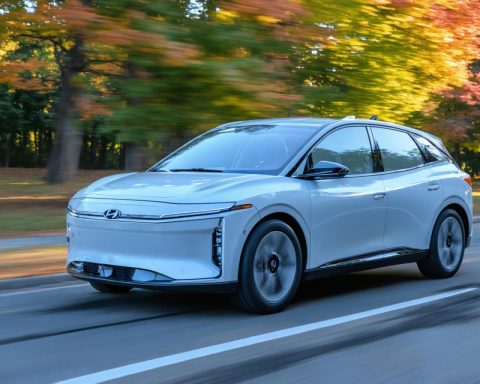- Norway’s electric vehicle (EV) highway exemplifies the future of eco-friendly travel, with over half of new cars sold being electric.
- The success stems from proactive government policies, tax incentives, and extensive charging infrastructure with nearly 20,000 stations.
- Innovative battery technologies, like solid-state batteries, enhance travel efficiency and safety with faster charging and regenerative braking systems.
- Norway’s electric highway serves as an inspiring global model, showcasing how strategic investments can promote sustainable transportation.
- The experience highlights the synergy between technology, policy, and natural beauty in driving environmental progress.
Imagine gliding effortlessly along the winding roads of Norway, surrounded by majestic fjords and towering mountains, inside the quiet cocoon of a state-of-the-art electric vehicle (EV). In this stunning Scandinavian nation, the once-considered futuristic vision of an electric highway has come to vibrant life, offering us a window into the future of eco-friendly travel.
Charging Towards a Greener Tomorrow
On the picturesque routes crisscrossing Norway, electric cars don’t just represent a transportation choice; they embody a cultural shift toward sustainability. Over half of all new cars sold each year in Norway are electric, a direct result of proactive government policies and a population committed to reducing carbon footprints. With nearly 20,000 public charging stations scattered throughout this vast and varied landscape—including Tesla Supercharger networks and high-speed chargers from operators like Recharge—Norway makes the dream of seamless EV travel a tangible reality.
As the midnight sun cloaks the scenic west coast in a warm glow, it illuminates not just the rugged beauty of the landscape but also a revolutionary path forward. Imagine stopping for a quick charge at a picturesque station, where while your car powers up, you soak in the serene surroundings.
Pioneering Battery Technology
So, what makes Norway’s electric highway system such a success? Cutting-edge battery technology and infrastructure investment play pivotal roles. Innovations like solid-state batteries, which promise greater energy density and faster charging times, are at the forefront, bolstered by incentives such as tax breaks and toll exemptions that sweeten the switch for drivers.
Visualize a fleet of EVs, silently mastering treacherous ice roads in midwinter with the help of advanced regenerative braking systems that not only enhance safety but also extend range. Norway’s experience demonstrates that the synergy between technology, policy, and natural beauty can drive significant environmental progress.
A Model for Global Change
Norway’s electric highway serves as a beacon for countries around the globe, showing what can be accomplished with commitment and innovation. The takeaway is clear: through concentrated effort and strategic investment in infrastructure, we can usher in an era of sustainable travel.
As you imagine your next road trip amidst the tapestry of Norway’s landscapes, let the whisper of the EV’s tires on pristine pavement remind you that a cleaner, greener future is not just a possibility—it’s already happening.
Discover the Electrifying Journey: Norway’s EV Revolution and Future Innovations
Expanding Norway’s Electric Highway Experience
Norway’s leadership in the electric vehicle (EV) revolution offers numerous insights and sets an instructional template for global adoption. Beyond just fostering an ecosystem for green travel, Norway’s strategies highlight essential elements for success in the transition to sustainable transportation. Here’s a deeper dive into how Norway exemplifies a future-ready EV system, alongside global trends and practical applications.
How Norway Became an EV Pioneer
1. Government Policies: Norway has implemented robust policies to encourage EV adoption. Tax exemptions, lowered registration fees, and access to bus lanes are some incentives given to EV drivers, significantly cutting ownership costs compared to traditional vehicles (Source: Norwegian Ministry of Transport).
2. Investment in Charging Infrastructure: With more than 20,000 public charging stations and dedicated EV lanes, Norway ensures that electric mobility is convenient. This support system is critical to alleviating range anxiety, a common concern among potential EV users (Source: International Energy Agency).
3. Incentives and Subsidies: Comprehensive incentives have led to EVs making up over 50% of new car sales, a feat unrivaled globally. This pioneering approach serves as a roadmap for other nations wanting to boost their EV market share.
Pioneering Battery Technology and Its Importance
The backbone of Norway’s success is cutting-edge battery technology, leading to impressive breakthroughs like solid-state batteries. These batteries offer increased energy density and faster charging times, which are especially beneficial in cold climates where battery efficiency can drop (Source: Nature Materials).
Advancements to Watch:
– Regenerative Braking Systems: These systems enhance vehicle efficiency, enabling longer travel per charge, essential for daunting terrains and adverse weather conditions like those in Norway.
– EV Range Extensions: Solid-state batteries have implications for range optimization, allowing EVs to travel farther, thus supporting even broader adoption (Source: Massachusetts Institute of Technology).
Real-World Benefits Beyond Norway
These technologies and models have broad implications and can be adapted globally to fit different country contexts. For example, the synergy of policy and technology seen in Norway can be modified to suit diverse geographic and economic landscapes.
Market Forecasts and Industry Trends
The EV market is expected to continue its upward trajectory. According to BloombergNEF, EV sales are predicted to reach 54 million by 2040, accounting for 58% of global passenger car sales. These figures are propelled by declining battery costs and enhanced vehicle charging infrastructure globally.
Controversies and Challenges
Norway’s EV success story does come with its challenges, including debates about the environmental cost of battery production and the need for ethically sourced materials. Balancing mining activities with environmental preservation remains a pressing issue (Source: Amnesty International).
Actionable Recommendations
1. Adopt Localized Incentive Structures: Countries seeking to replicate Norway’s success should tailor incentives to their local environments.
2. Invest in Renewable Energy-Powered Charging: Ensuring that EV infrastructure uses sustainable energy sources reduces the overall carbon footprint of EVs.
3. Public Education and Awareness: Boosting consumer awareness about EV benefits can accelerate market penetration.
Conclusion: Harnessing Norway’s Blueprint for Global Change
Norway’s experience is a testament to how strategic investment and foresight can transform a nation’s transportation landscape. By learning from Norway’s innovative policies and advances in technology, other countries can propel their transitions to sustainable mobility. For more on sustainable innovations and global energy trends, explore the resources at International Energy Agency.
Norway showcases that a commitment to sustainability and technological advancement can lead us toward an electrifying future—one where nature and innovation thrive in harmony.
